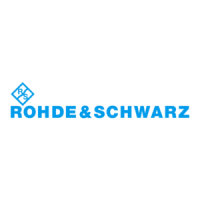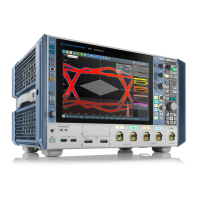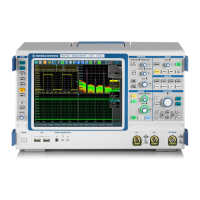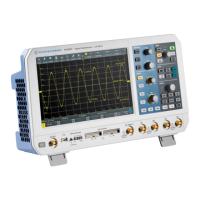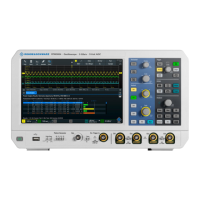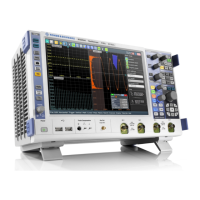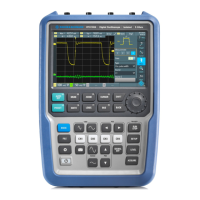Protocol analysis
R&S
®
RTE
835User Manual 1326.1032.02 ─ 20
ET
Defines, whether an Endpoint Type (ET) check that meets specific conditions is execu-
ted or not.
"Condition"
Defining a specific endpoint type or an ET range requires to set the
operator to one of the following: equal, not equal, less than, less than
or equal, greater than, greater than or equal, in range, out of range.
"Min"
Specifies an ET, or sets the start value of an ET range.
"Max"
Sets the end value of an ET range if "Condition" (TRIGger<m>:USB:
TCONdition) is set to INRange or OORange.
Remote command:
TRIGger<m>:USB:WETCheck on page 1805
TRIGger<m>:USB:TCONdition on page 1803
TRIGger<m>:USB:TMIN on page 1804
TRIGger<m>:USB:TMAX on page 1804
13.16.3.2 Triggering on USB 2.0
Prerequisite: A bus is configured for the USB 2.0 signal to be analyzed.
For the basic trigger settings, proceed in the following way:
1. Press the [PROTOCOL] key and select the "Trigger" tab.
2. Press the "Select" button. The "Source" button is shown.
3. Tap the "Source" button and select the "Serial bus" trigger source.
4. Select the serial bus that is set to USB 2.0.
5. Tap "Trigger Type USB" and select the trigger type to be used for USB protocol
analysis.
Available trigger types depend on the USB 2.0 protocol type that is activated in
"Protocol type" on page 822.
6. Depending on the selected USB 2.0 protocol type and trigger type, more setup
conditions have to be specified.
For information on how to proceed with the configuration settings, see Chap-
ter 13.16.3.1, "USB 2.0 trigger settings", on page 825.
13.16.4 USB 2.0 decode results
When the configuration of the serial bus is complete, the signal can be decoded:
1. In the "Protocol" dialog > "Decode" tab, enable "Decode".
2. In the "Protocol" dialog > "Display" tab, select additional result display settings:
"Show decode table" and "Show binary signals".
USB (option R&S
RTE-K60)
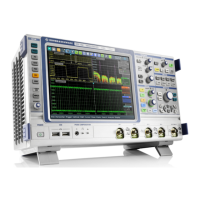
